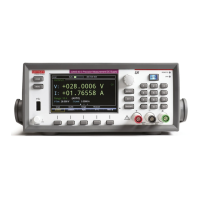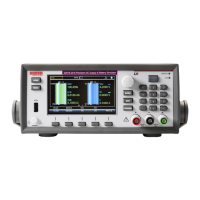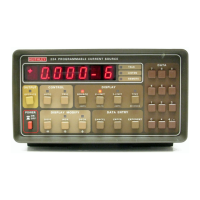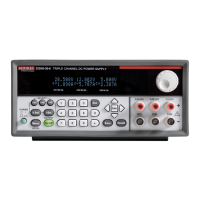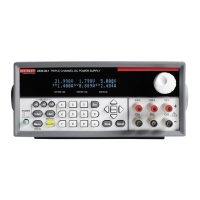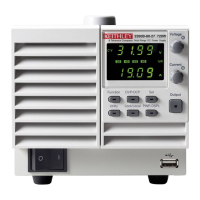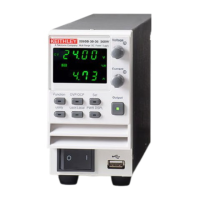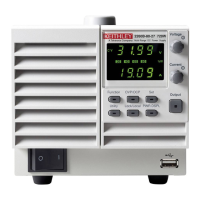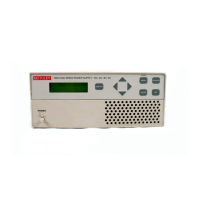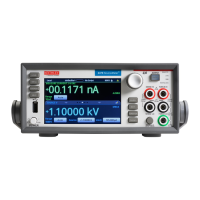Series 2280 Precision DC Power Supply Reference Manual Section 2: General operation
077085503 / March 2019 2-79
Even with the overvoltage protection set to the lowest value, never touch anything connected
to the terminals of the Series 2280 when the output is on. Always assume that a hazardous
voltage (greater than 30 V RMS) is present when the output is on. To prevent damage to the
DUT or external circuitry, do not set the voltage source to levels that exceed the value that is
set for overvoltage protection.
Setting overvoltage protection limits
Overvoltage protection has a default value of the maximum output.
To set overvoltage protection using the front panel:
1. Press the MENU key.
2. Under Source, select Protect.
3. Select OVP and set the limit.
4. Select HOME to return to the operating display.
To set overvoltage protection using SCPI commands:
To set the overvoltage limit for the voltage source to 20 V, send the command:
:VOLTage:PROTection 20
See the command description for [:SOURce[n]]:<function>:PROTection[:LEVel] (on page 7-76) for the
full list of options.
Overcurrent protection
Overcurrent protection restricts the maximum current level that the instrument can source. This
protects the device under test (DUT) from high current levels.
For example, if a sense lead is disconnected or broken during a 4-wire sense measurement, the
instrument can interpret the missing sense lead as a decrease in voltage and respond by increasing
the source output. If overcurrent protection is set, the sourced output is not allowed to exceed the
overcurrent protection limit.
When overcurrent protection is set and the sourced voltage exceeds the setting:
The output is turned off.
On the front panel, an indicator to the right of the voltage displays OCP.
An error is generated. For more information, refer to Overprotection error (on page 2-81).
When overcurrent protection is used in a test sequence, it should be set before turning the source on.

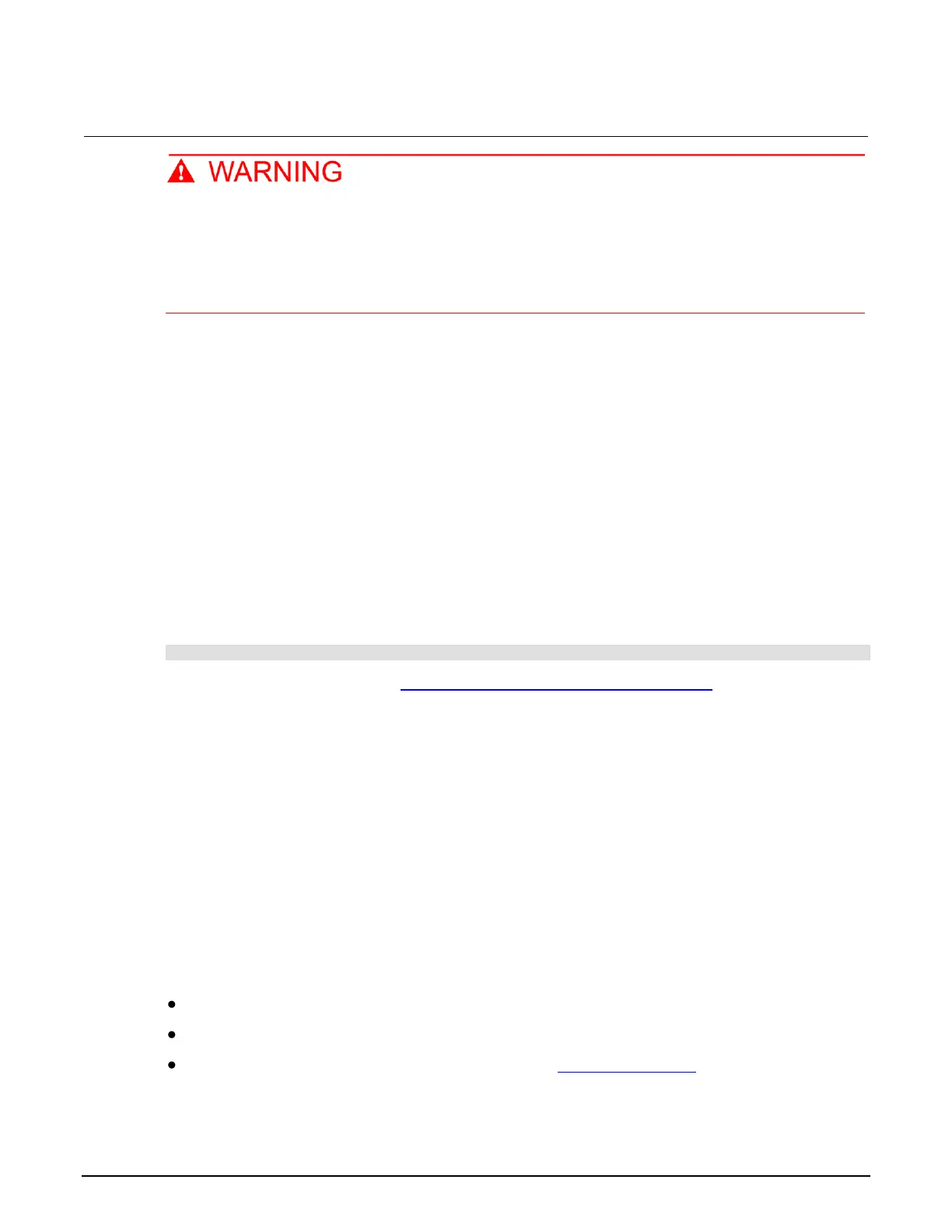